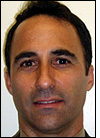To help nursing homes and other facilities protect patients and monitor their whereabouts, New York, N.Y.-based eHealth Solutions is adding RFID technology to its SigmaCare suite of mobile point-of-care solutions for physician practices and long-term-care facilities.
The new SigmaCare RFID Solution can be used in conjunction with the Wi-Fi-enabled SigmaCare system. The SigmaCare system allows staff to capture and access patient and clinical data at the point of care using PDAs and other handheld electronic devices.
The RFID Solution includes location-tracking software, Wi-Fi access points and wristbands equipped with active Wi-Fi 2.45 GHz RFID tags. The location-tracking software integrates with the SigmaCare software to alert users when a resident enters or leaves a particular zone, remains motionless for a period of time or attempts to leave the premises. It also allows staff to locate resident at any time. The core of the location-tracking software, PanOS Platform and PanGo Locator, and the wristbands equipped active RFID tags, are supplied by PanGo Networks, a Framingham, Mass. provider of wireless location-based systems.
The SigmaCare system tracks the movement of the tags, which are encoded with unique ID numbers. These numbers are matched with individual patient records in the SigmaCare system, allowing administrators to set specific rules and parameters for each patient. The tags communicate with Wi-Fi access points deployed at the facility. Through the use of a patented locator process utilized by PanGo, the location-tracking software determines each tag’s position, based on an access point’s location, facility construction and signal strength.The RFID tag transmits a unique identifier at frequent intervals when motion begins (to prolong its battery life, the tag goes dormant while motionless). The combination of the Wi-Fi access point and the software allows personnel to track tag movement.
Some patients have more freedom to move about than others, and the system can be set to understand those differences. “Nursing homes can make the tags resident-specific, because different residents have different limitations. We’ll sit down with a nursing home administrator, look at drawings of the facilities, and define, resident by resident, the specific facilities, wings, etc., that are off-limits or restricted,” says Steve Pacicco, eHealth Solutions’ CEO.
The system can be queried to locate a resident throughout the facility, and staff can run reports on historical location and activity. Depending on each nursing home’s implementation preference, an alert could be in the form of an audible signal sounded throughout the facility, an e-mail sent to PDAs, blinking lights on a console or other such methods. Specific alarms could also be set for different actions, so that a patient leaving a room and entering a common area, for instance, could trigger a blinking light, alerting staff that he or she had moved, while an alarm could sound if that same patient exited the facility.
According to Pacicco, eHealth developed the system in response to growing concerns about patient safety and a trend toward making long-term health-care facilities more of a home atmosphere and less of a hospital environment. “In nursing homes today, the average age is in the early 80s—and, unfortunately, a percentage of that population has varying degrees of dementia. The issue of elopement, of patients wandering out of facilities, is real,” he says. “There’s a real opportunity to leverage RFID to help.”
The company isn’t the first to offer a solution that uses RFID technology to monitor the location of patients. Exavera Technologies, located in Portsmouth, N.H., offers its eShepherd information system, which combines RFID with Wi-Fi and voice over IP (VoIP) to deliver a single system that tracks patients, staff and hospital assets (see RFID Remedy for Medical Errors). Xtag, based in Leeds, United Kingdom, has developed a 433.92 MHz RFID security system for tracking babies in hospital infant wards, or for monitoring wandering patients in elder care facilities (see Xtag Unveils Infant Security System). And Lakewood, N.J.-based Prosec Protection Systems (see RFID Delivers Newborn Security) provides similar patient-protection systems to the health-care industry.
Commercial availability of the SigmaCare RFID Solution is slated for September. Pricing will vary depending on a customer’s requirements. Two customers are presently testing the system, but eHealth declined to provide any details.


